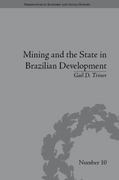Can someone assist please
DEPARTMENT OF ECONOMICS ECONlOOO: Principles of Economics Problem Set 4: Interfering in the Market I I) '|.. 1. In an effort to discourage the consumption of energy drinks, a tax of $50 per can is imposed on consumers at the point of sale. Assess the total welfare effect of the tax. Does it have the intended effect? 2. Consider a demand and supply graph with an effectively enforced price oor. a) What is the effect on the price in the market and the quantity traded of an increase in demand? b} What is the effect on the price in the market and the quantity traded of an increase in supply? 3. Arguing that patties are a basic food item for poor people, advocates persuade the government to impose a controlled price of $100, below the current market price of $160 for a patty. a) Represent this policy on a demand and supply graph. b) Does this policy result in more or fewer people eating patties? 4. Currently, human organs can be only donated and cannot P g be sold. Putting aside any ethical misgivings, use the market model to show how allowing a legal trade in human organs could improve welfare. a) What is the area in the diagram that represents the amount of welfare under the current prohibition? D b) What is the area that represents welfare if a free market is allowed? '1 c) By how much does the market solution increase welfare? 5. Because it is difficult to live on the current minimum wage, union leaders ask for an increase. Advise the government on the consequences. 6. The Jamaica Agricultural Society persuades the government, in the interest of food seCurity, to impose a price oor on local carrots in order to keep carrot farmers in the business. a) Assess the effectiveness of this measure in keeping farmers in carrot farming. 1)] Assess the welfare implications of this measure. '7. Since 1937, New York City has strictly limited the number of taxi licenses, called medallions. Currently, the number is approximately 13,600 (which is a lot less than the nearly 30,000 taxis that used to ply their trade in New York when it was an open market). Using the market model, illustrate the effect on the price and number of taxis in New York of eliminating the medallion system and allowing an unrestricted market in taxi transportation? /







